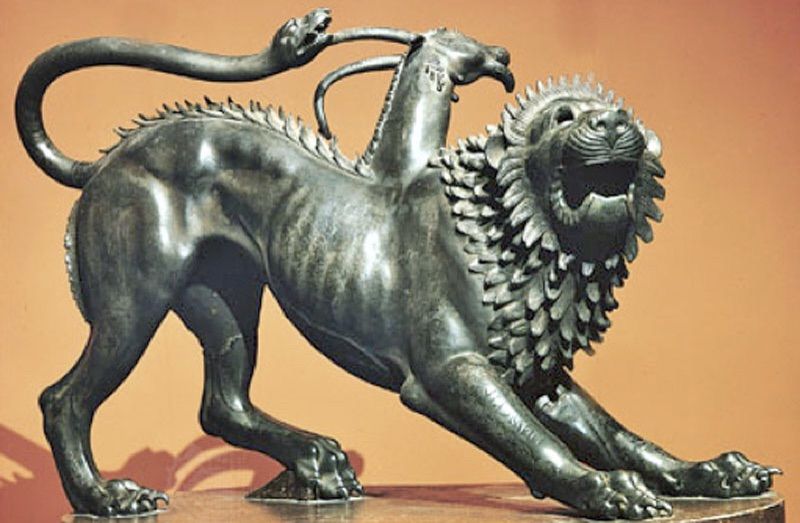

(Under normal circumstances, in the absence of zygote fusion, two fertilized eggs result in the production of dizygotic, or fraternal, twins.) Dispermic chimerism can also occur when a zygote fuses with a fertilized polar body (a small degenerative cell produced by egg cell division).

In dispermic chimeras, two eggs that have been fertilized by two sperm fuse together, producing a so-called tetragametic individual-an individual originating from four gametes, or sex cells. (For information on the phenomenon in plants, see chimera.)

Included among the different known types of animal chimeras are dispermic and twin chimeras, microchimeras, and parthenogenetic and androgenetic chimeras. Chimeras are distinguished from mosaics, organisms that contain genetically different populations of cells originating from a single zygote, and from hybrids, organisms containing genetically identical populations of cells originating from a cross of two different species. The term is derived from the Chimera of Greek mythology, a fire-breathing monster that was part lion, part goat, and part dragon. SpaceNext50 Britannica presents SpaceNext50, From the race to the Moon to space stewardship, we explore a wide range of subjects that feed our curiosity about space!Ĭhimera, in genetics, an organism or tissue that contains at least two different sets of DNA, most often originating from the fusion of as many different zygotes (fertilized eggs).Learn about the major environmental problems facing our planet and what can be done about them! Saving Earth Britannica Presents Earth’s To-Do List for the 21st Century.Britannica Beyond We’ve created a new place where questions are at the center of learning.100 Women Britannica celebrates the centennial of the Nineteenth Amendment, highlighting suffragists and history-making politicians.
#Define chimera how to


 0 kommentar(er)
0 kommentar(er)
